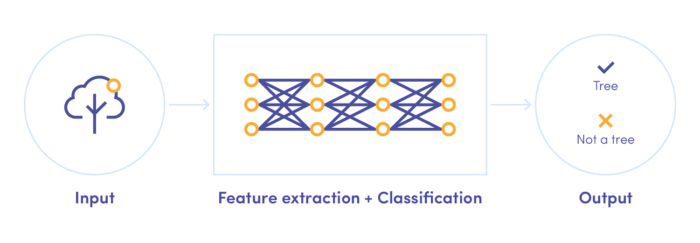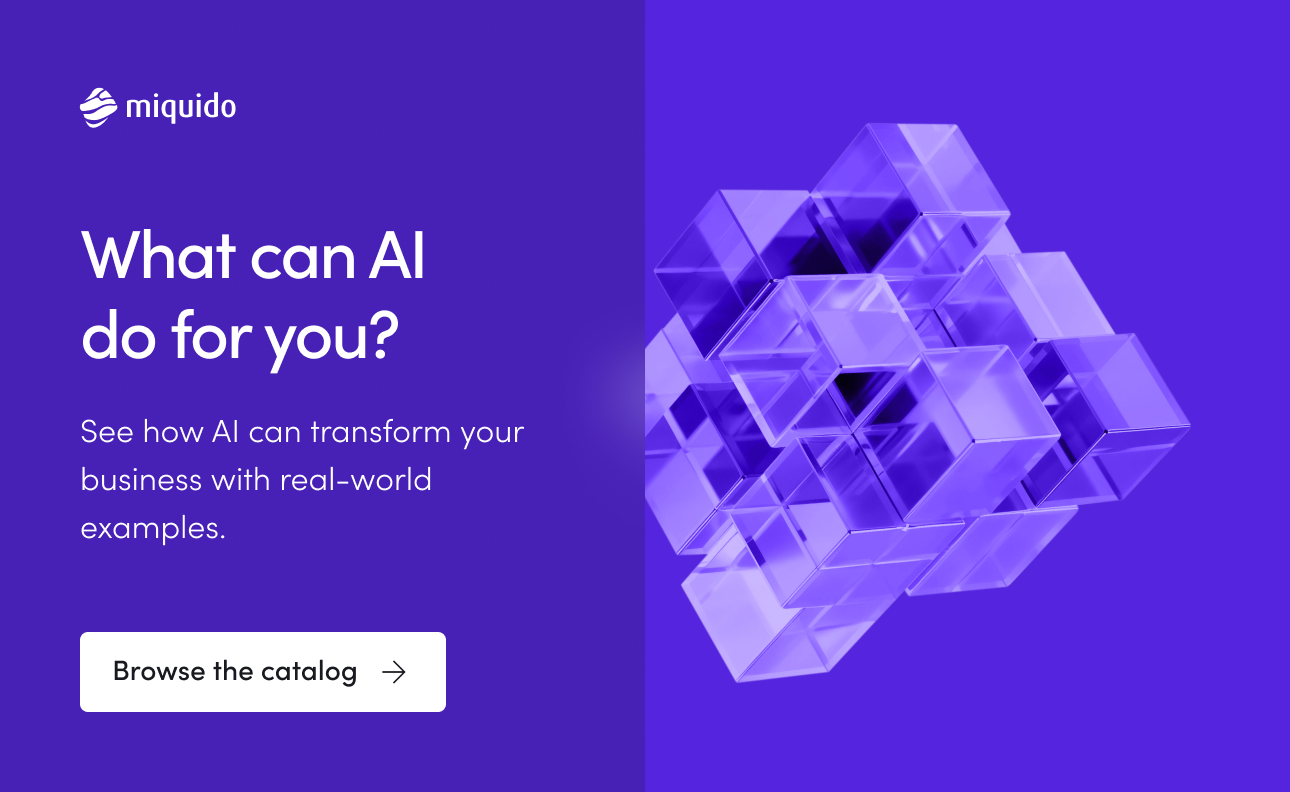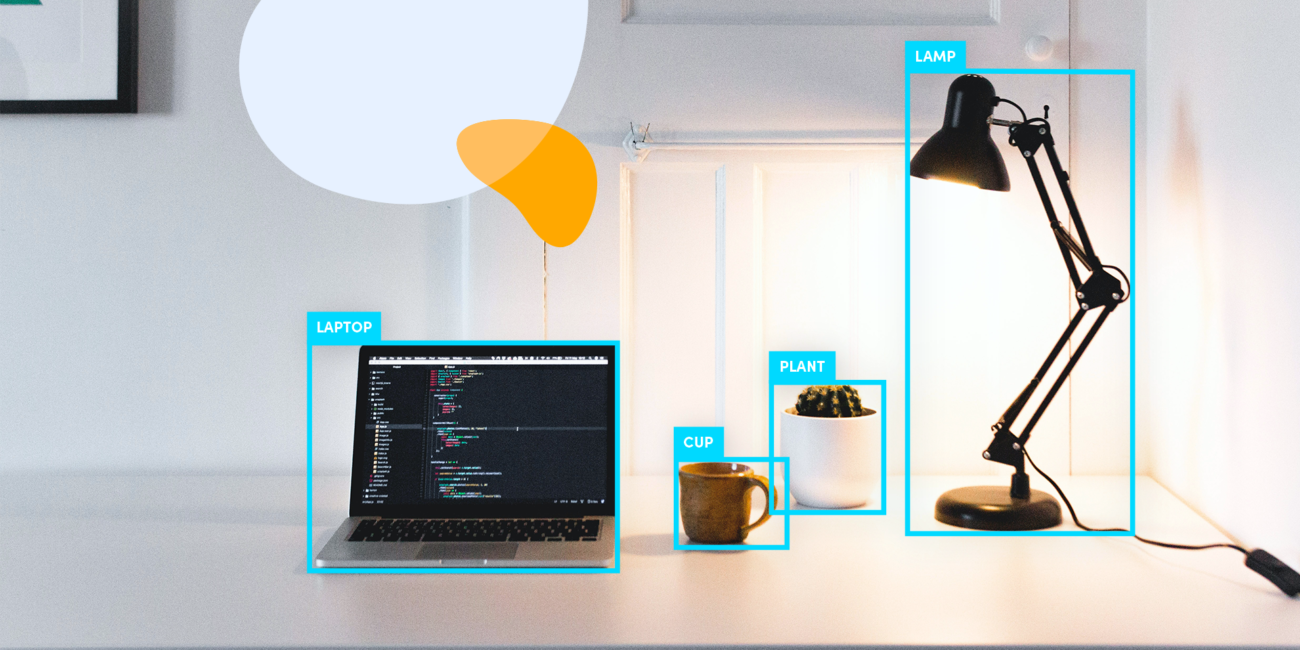It’s been quite some time since photos and videos have become more than reminders of our favourite vacation memories. And as technology evolves, the shift towards visual media becomes way more obvious.
We mostly associate visuals with entertainment, but it’s easy to forget that images and videos are also a way to store data that can be processed and interpreted. In this article, we’re going to talk about computer vision, one of the hottest Artificial Intelligence technologies of today, and learn how we can use it to make sense of visual media.
Computer vision basics
The definition is there in the name itself: computer vision is a subset of Artificial Intelligence focused on analysing visuals and interpreting them. Through computer vision solutions, we’re able to search the images and videos for specific information, find patterns and categorise the visuals.
The easiest way to understand computer vision is to think of it as an aim to mimic how humans see and interpret reality. For example, when we see a car passing by, we don’t wonder what it is: we’ve seen it countless times before, we know what it looks like, and therefore we’re able to name it without any difficulty.
That is exactly what computer vision does. In many cases, it’s actually able to outperform humans and find specific details we often fail to see. How’s that possible, you might ask? Let’s dig right into it…
How does computer vision technology work?
Because computer vision aims to mimic how we see the world, it needs a vast amount of data in order to perceive the world similarly to how people do it. In other words, the goal here goes beyond simply picking up shapes and colours, but to make it possible for a machine to understand the context through image processing.

Using deep learning algorithms is the most efficient way to achieve this. In order for a machine to learn to correctly categorise digital images with this approach, we need to provide the algorithm with examples of correctly labelled images.
This way, the system is able to recognise patterns between different images and correctly guess what it’s currently “looking at”. With enough labelled training data, the machine can quickly pick up on its mistakes and improve its accuracy.
Interested in the details? Check out our article on how to build a computer vision app in Flutter
Popular computer vision applications
Deep learning algorithms are interesting enough, but that doesn’t tell us much about why we actually need computer vision. And the truth is, there are plenty of ways we can use it!

Security
Computer vision has proven to be an amazing tool for automating security and monitoring systems. Since it is able to identify and find objects within visuals, it can be trained to look for suspicious activities. And since a machine won’t ever get tired of watching hours of footage, it can prove to be much more accurate than human vision, and alert us when it detects something abnormal is happening.
Content management
This is where computer vision can truly shine. Not only can it organise visual data by applying relevant tags through content indexing, but it can also help us find specifically what we’re looking for. It’s especially beneficial when it comes to content moderation. With computer vision, we can have the machine search for inappropriate content in images or videos, and automate a huge amount of human work.
Biometrics
Computer vision comes as a huge help for automating tasks related to facial recognition, fingerprint detection, etc. This is something most of us have encountered as a feature on our smartphones or other digital devices, but it goes way beyond that. Many organisations use computer vision to confirm their clients’ identities. It’s arguably one of the most important applications of computer vision, and perhaps the most controversial one at the same time because of the potential.

Defect detection
We’ve briefly mentioned detecting abnormalities when it comes to security, but it goes way beyond that. As computer vision algorithms are fed data about what a particular thing is supposed to look like, it can be used to detect any sort of visual defect and thus correctly recognise damage, whether it’s a scratch, wrong colour, incorrect size or shape. While this application of computer vision is yet to be perfected, it’s certainly one of the most promising ones for manufacturing industries.
Data digitisation
Ever had to manually copy your printed text to a digital form? Thanks to computer vision, you can say goodbye to similar time-consuming tasks. Using optical character recognition (OCR) we can recognise print or handwritten texts and images, digitise them, and convert them into a format the machine can interpret. This brings a definite advantage when it comes to data organisation, and it massively helps to modernise internal processes.
For a real-life example of a computer vision application, check out Planter. Using object recognition, the mobile app is able to identify the species of plants using pictures only and give users useful tips on how to care for a given plant.
Industries that benefit from computer vision
The most important industry to us all is also the one where computer vision has the most potential to grow and bring benefits. As it is precisely about finding features in images, it can help speed up and improve diagnosis based on medical imaging. When properly trained, a computer vision model can be used for analysing ultrasound, x-rays, MRI’s, etc. The potential for computer vision in healthcare app development is vast, and it has already proven to be able to diagnose breast cancer more accurately than the human eye.
We’ve already mentioned this one when we talked about defect and object detection, so let’s get into it in more detail. Aside from making sure all flawed products are detected, computer vision can also monitor the equipment itself for any metric abnormalities, identify product parts and, thus, help the machine with assembling it, and aid in monitoring the area for potential compliance violations.
The financial industry has become largely digitalised, and this trend will only continue in the future. Needless to say, security standards have to closely follow these innovations. With computer vision, identity verification becomes much faster, not to mention the system can work on a 24/7 basis. Improvements to security can also include mobile payments using facial recognition, which may become a standard in the future.
Product images and videos are essentially what keeps the e-Commerce industry going, and computer vision can make the life of online store owners that much easier. It’s largely beneficial especially when it comes to product recommendations, as a computer vision system can automatically tag images and use that information to present a customer with a more personalised offer. It’s also very useful for image quality control, ensuring that no blurred product photo is left on the website.
Computer vision solutions can be used for entertainment mobile app development, but they can be especially beneficial when it comes to social media, where the content keeps piling up every day. With computer vision, social media can be made safer by automatically detecting visual content that goes against community standards. This enables the system to delete it on the spot before any user gets to see it.
Summary
Computer vision can be applied basically anywhere there’s visual content if provided with enough data. It can be your powerful ally in automating tedious tasks such as anomaly detection, monitoring and identity verification. The solutions based on it will only get better with time, as we’re still exploring the full capabilities of this technology, but we can already say with certainty that it’s here to make our lives a little easier.
Want to create your own computer vision app? Don’t hesitate to contact our experienced computer vision company!





